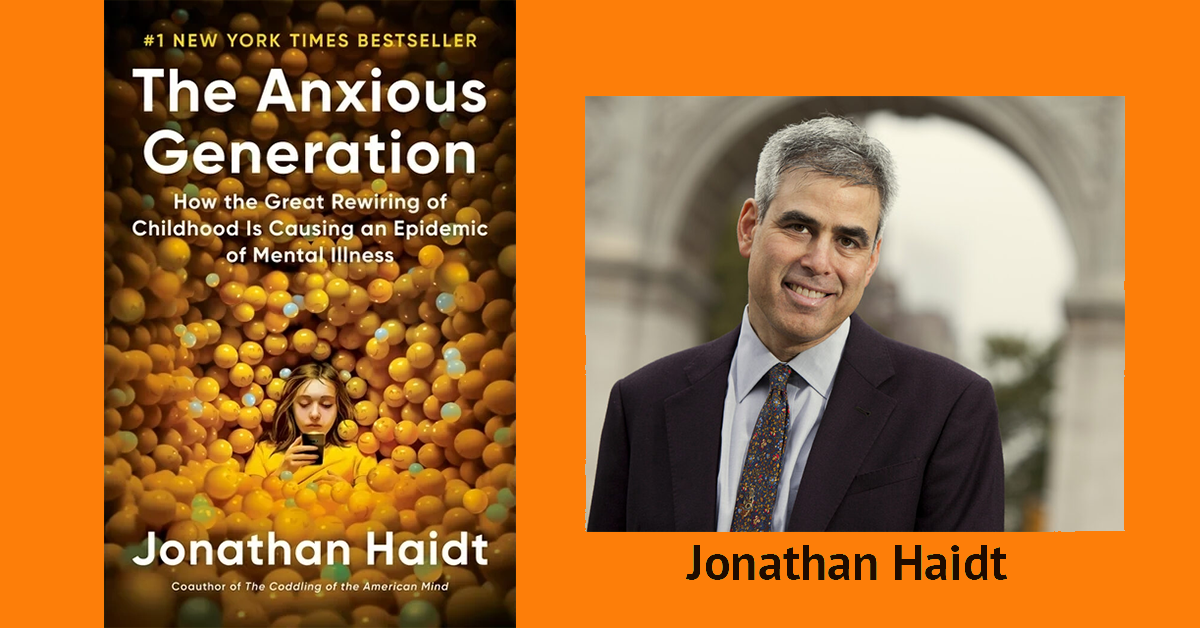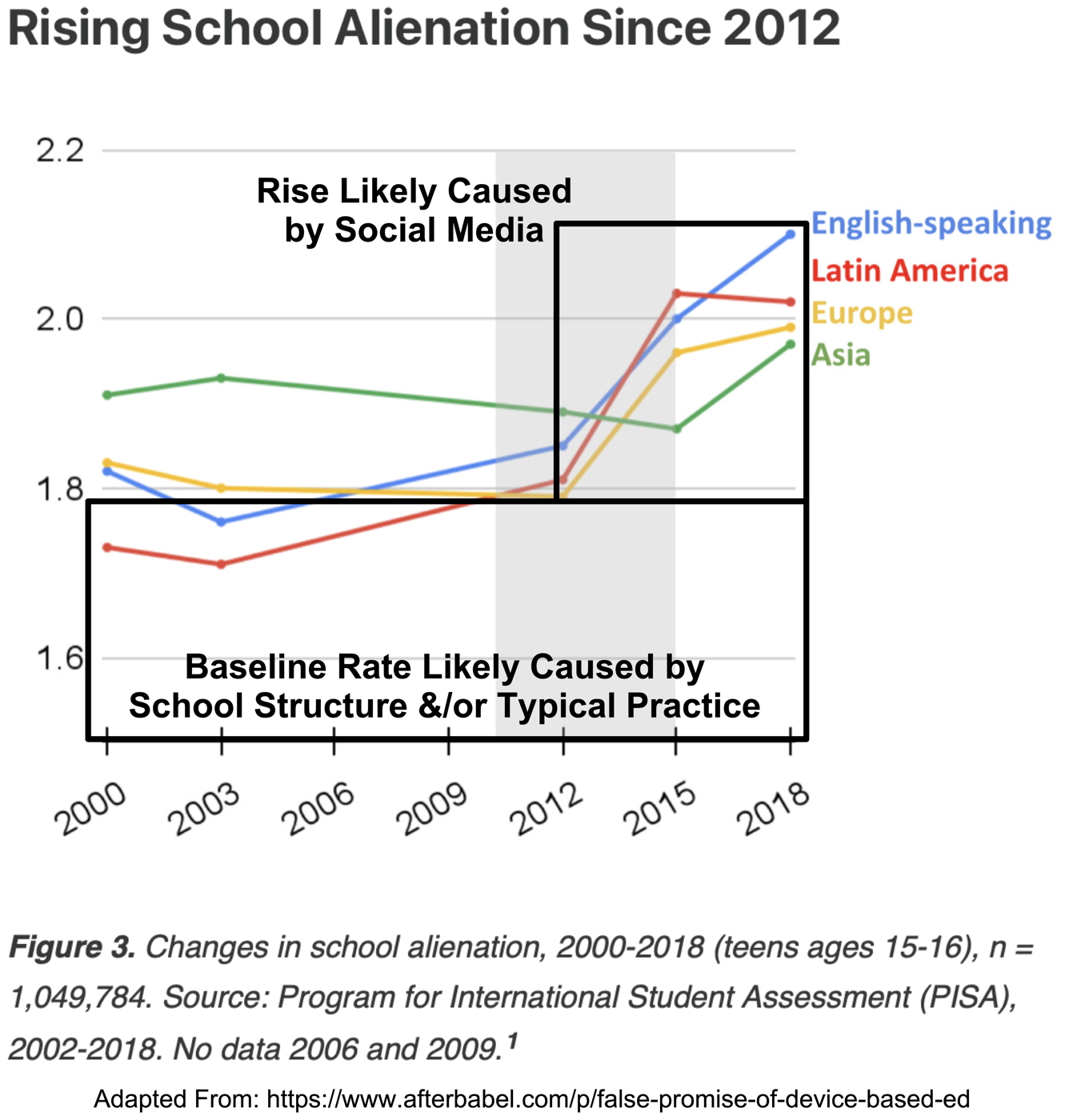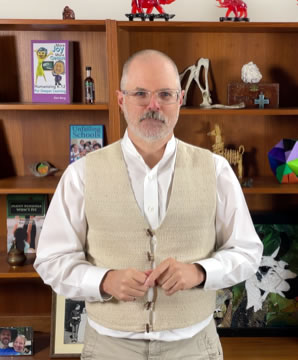Calming The Anxious Generation at School
The book The Anxious Generation by Jonathan Haidt has brought a newfound awareness of the impact of smartphones in K-12 schools, where students are experiencing anxiety, depression and other forms of psychological distress.
While I think it is generally important to discuss the roles of smartphones and social media in children’s lives at school, I think it is more important to point out that we have scientific proof of the most pervasive proximal causal source of psychological distress in children’s lives.
While smartphones and social media can be vectors for that source, regulating access to them is not going to be the most powerful means of alleviating the widespread distress in schools.
The most pervasive proximal causal source of psychological distress in children’s lives is the suppressing and/or neglecting of their primary psychological needs.
Specifically, their needs for sleep, relatedness, autonomy, and competence.
In the introduction to my award-winning book Schooling for Holistic Equity I have pointed out objective evidence that there is a pervasive pattern of disengagement of both students and teachers in schools.
That well documented pattern long pre-dates both smartphones and social media, which quickly made a bad situation worse upon their arrival.
I am confident that reforming school management to place emphasis on engagement and agency, while de-emphasizing (but not eliminating) obedience to academic standards, will be the single most powerful remedy for alleviating childhood psychological distress.
This change in focus should be thought of as an extension of every school’s legal and moral responsibility to act in loco parentis.
There is no conceivable way that a reasonable parent (or government with an interest in an educated citizenry) would accept the existence of a school that would deliberately thwart the physiological needs of children by suffocating, dehydrating, starving, or recklessly exposing them to the elements.
The pattern of disengagement that is well documented in K-12 schools shows that most parents and legislators have deceived themselves and each other into believing that they should accept schools that routinely suppress or neglect children’s and teachers’ primary psychological needs, consequently compromising their well-being.
That was an understandable mistake; we inherited a school system that was structured long before the collection of scientific evidence of the role of psychological needs in producing well-being.
But we now know better and can do better, IF and when we overcome the bureaucratic resistance to change in the school system.
The Anxious Generation and the Hidden Curriculum

Jonathan Haidt’s book The Anxious Generation makes a powerful argument as evidenced by the remarkable number of school districts that have taken action to limit cell phone usage within the first year of its publication.
However, those actions will only have limited effects as long as schools remain the same kind of disengaging places that they were before those limitations were put in place.
The chart below, from Haidt’s After Babel Substack, shows rates of school alienation across different global regions.
That rate is only one symptom of the deeper problem.
The chart is evidence that social media has exacerbated an EXISTING problem.
But, banning devices will not change the baseline rate and I hope that we are not willing to accept that the baseline is acceptable.

The generation Haidt has labelled as anxious is ultimately suffering from the effects of the hidden curriculum.
The hidden curriculum is how brains interact with policies to create limitations on what can happen in a classroom.
The most well-documented symptom of a problematic hidden curriculum is the pervasive pattern of disengagement that is characteristic of mainstream schools.
Smartphones and social media just exacerbated the disease that underlies the disengagement symptom.
The disengaging effect of the hidden curriculum was already well-established in schools, even though that problematic pattern has been too subtle to make headlines.
The remarkable effects that Haidt observes with an extraordinary amount of data were just exposing deeper problems that just needed the boost of greedy corporate algorithms to do their worst.
Those algorithms are just another example of a hidden curriculum that exists outside of classrooms and schools, in this case the policies of corporations interacting with the brains of children.
What Haidt documented in The Anxious Generation is how the hidden curriculum of social media and smartphones are exploiting brains for corporate profits.
If you are interested in doing more than making trivial surface changes to K-12 schools then you should learn about the hidden curriculum in my award-winning book Schooling for Holistic Equity: How to Manage the Hidden Curriculum in K-12.
If you would prefer a lighter read (150 vs. 516 pages) I suggest my most recent book The Agentic Schools Manifesto in which I finally answer John Dewey’s 1938 call for a theory of experience.
The idea is that educative experiences are those in which the learner expresses their agency, whereas non-educative experiences are those in which they are disengaged or responding to the demands of other people that they do not trust as much as they trust themselves.
For multimedia exposure to these ideas I suggest that you browse my websites.
On one page I expanded on the idea of the in loco parentis duty of care that schools owe their students.
That page introduces Back-to-Basics 2.0 but does not go into detail.
I have page called Back-to-Basics 2.0 that does give more details.
I invite you to explore this site, HolisticEquity.org, to delve into a wide variety of videos and other resources to support teachers and principals to better understand and implement changes in their schools.

This article was printed from HolisticEquity.com




